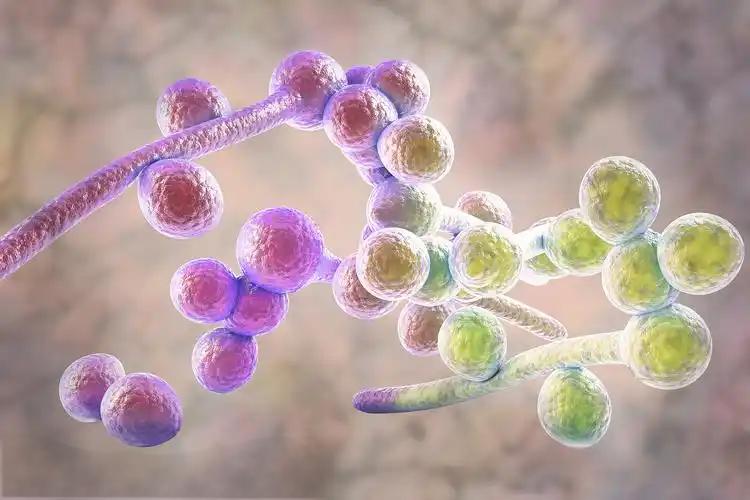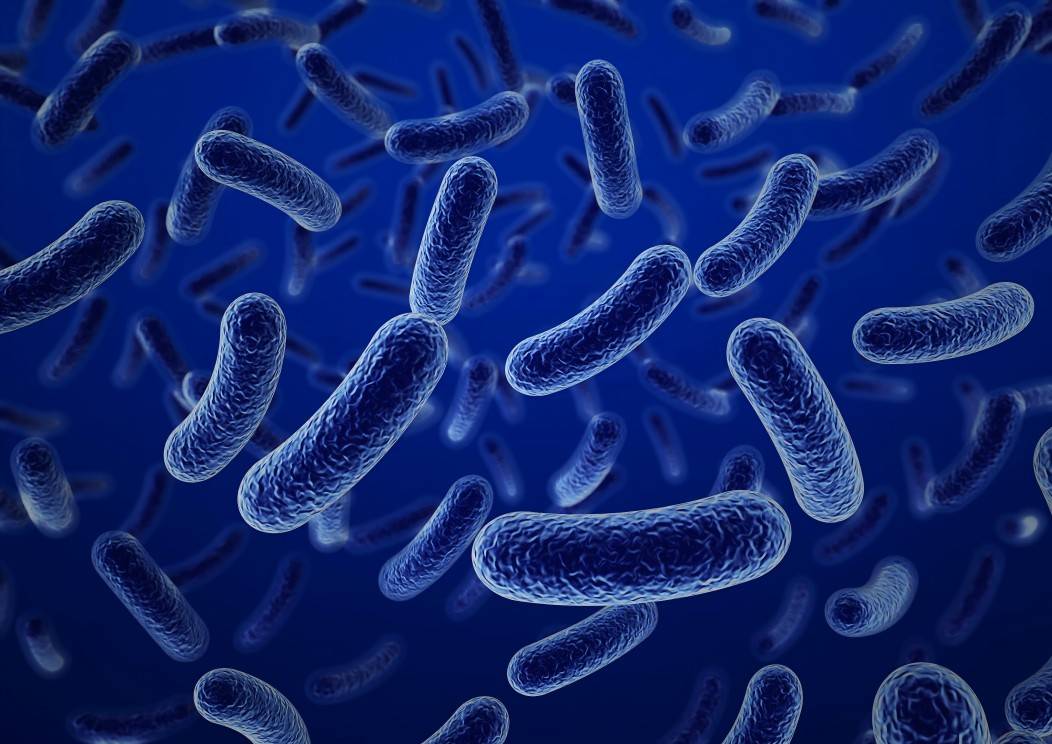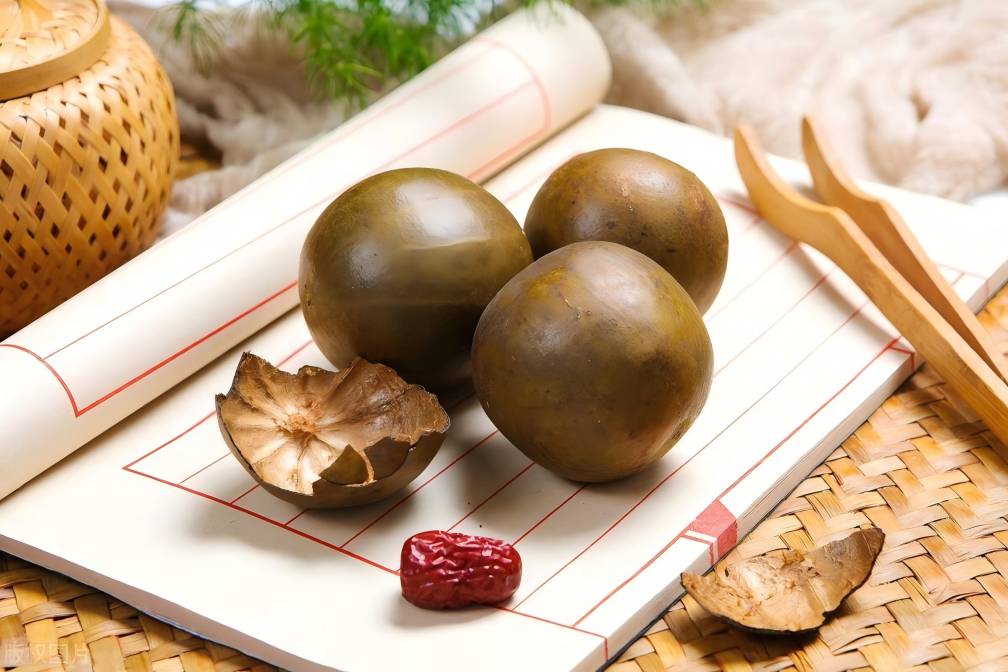How to Produce Sweetener Xylitol Powder by Fermentation Method?
1 Introduction
Xylitol has a broad market space in the fields of food, medicine and other areas, and there is a huge potential for development [1-3]. At present, the production of xylitol by biofermentation is a new green and economical way to produce xylitol. The production of xylitol by biofermentation avoids violent chemical reactions, does not require high-temperature and high-pressure equipment and catalysts, and due to the specificity of strains, enzyme specificity, and the uniqueness of the conversion and other characteristics, so that the production of xylitol by biofermentation has environmental protection, energy saving, high efficiency and many other advantages, and it has a great potential for industrial development, which has been widely researched and paid attention to by domestic and foreign researchers [4,5].
Although xylitol production by microbial fermentation has a broad development and application prospect, there are still a lot of problems that need to be solved during the actual research and industrialization: how to obtain high-performance fermentation strains, how to stabilize and improve the yield through the comprehensive fermentation control, and how to further promote the industrialization process[6] . Therefore, the current research on xylitol production by microbial fermentation includes the study of fermentation performance of different xylitol-producing strains, preparation of plant hemicellulose hydrolysate as fermentation substrate, detoxification and fermentation conditions, as well as the use of immobilization technology to achieve multi-batch fermentation[7] . In this paper, we will focus on the main research advances in the production of xylitol by bioprocessing.
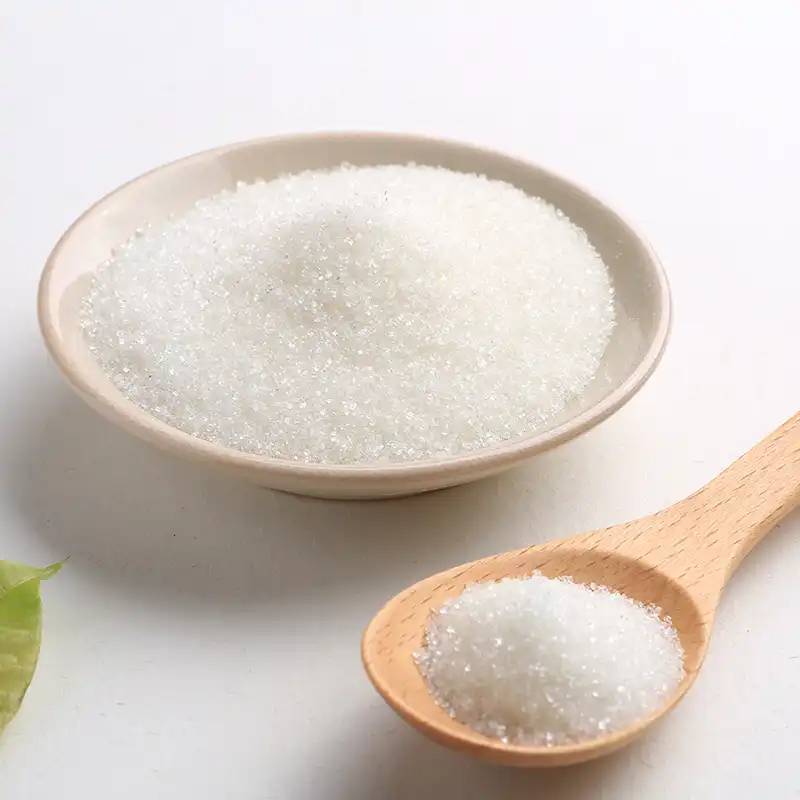
2 Microorganisms for xylitol production by fermentation
2.1 Fermentation of xylitol by natural microorganisms
In industrial fermentation production, the fermentation performance of strains is directly related to the production capacity of microbial metabolism, the cost of fermentation production, and the difficulty of industrial scale production. Currently, xylose/xylitol conversion and xylitol yield are still one of the bottlenecks limiting the scale-up of xylitol production by microbial conversion, so it is particularly important to obtain a high-yielding xylitol strain with excellent performance [8].
There are many species of microorganisms that can utilize xylose to produce xylitol through different metabolic pathways, including a small number of bacteria, some molds, and most of the yeasts [2]. However, most of the microorganisms have been reported to produce xylitol at low conversion rates by fermentation. Although fungi can produce xylitol through the xylose → xylulose → xylitol pathway, the production efficiency of fungi is generally low [9]. Through comprehensive analysis, it is found that yeasts, especially Pseudomallei, have superior performance in xylitol fermentation, and their maximum yield can reach 84.5% of the theoretical value, so most of the current domestic and international research focuses on the use of yeast to convert xylose to produce xylitol [10,11].
2.2 Construction of genetically engineered strains for xylitol production by fermentation
With the rapid development of genetic engineering technology in recent years, some researchers have obtained high yielding strains by screening, cloning and transgenic means from nature. E. coli is considered as the first choice of genetically engineered bacteria for xylitol production due to its advantages of easy regulation, easy cultivation, and clear metabolic background [12]. It has been demonstrated that xylitol can be detected after fermentation by introducing xylose reductase gene into E. coli cells. However, only the xylose reductase introduced into E. coli still has certain defects, such as xylose reductase (XR) specificity is relatively poor, can catalyze both xylose and arabinose conversion. The arabinitol and xylitol generated from arabinose are differential isomers, and both have extremely similar physicochemical properties, which increases the difficulties for the subsequent separation and purification [13]. Therefore, some researchers introduced xylose isomerase gene and xylitol reductase gene into E. coli, and utilized xylulose as the intermediate product of xylose conversion to produce xylitol.
As shown in Fig. 1, the xylose metabolic pathway can be seen that xylose is isomerized to xylulose by xylose isomerase (XI), and then xylitol is produced by xylitol reductase. The construction of this pathway can effectively avoid the problem of XR catalytic non-specificity, which is a novel pathway for xylitol production [14]. In addition, the introduction of L-arabinose isomerase gene, alloxanose isomerase gene and xylulose reductase gene into E. coli not only constructed a new metabolic pathway from L-arabinose to xylitol, but also eliminated the interference of arabinitol, which is also very favorable[15] . Wang Xiaoxia et al [16] through the xylanase gene (xynA) and xylose reductase gene (xyl1) into Escherichia coli and induced its co-expression found that although the enzyme activity of the two enzymes is lower than the enzyme activity of the separate expression, but it has been proved to be able to directly from the lignocellulosic raw materials for the preparation of xylitol by fermentation, do not have to be derived from the hemicellulosic hydrolysate, which is also a new pathway to open up for the production of xylitol bioprocess. This also opens up a new way for the biological production of xylitol.
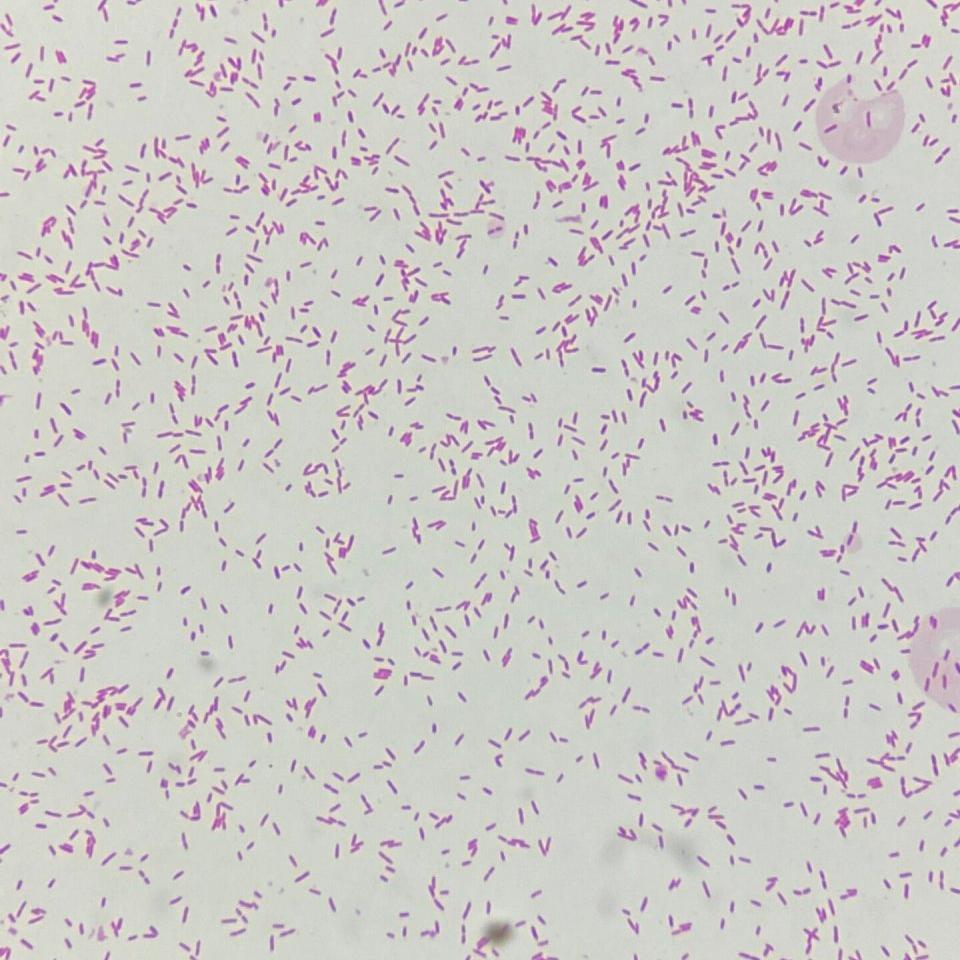
Currently, not only E. coli is used as a carrier for genetic engineering bacteria, but also yeast is often used as an important industrial microorganism. Saccharomyces cerevisiae is one of the key research targets for genetic engineering vectors because of its high tolerance to some growth inhibitors, rapid growth and low by-products [17,18]. As shown in Figure 1, xylose metabolism in yeast cells is catalyzed by xylose reductase. However, due to the lack of xylose-related enzymes, Saccharomyces cerevisiae is unable to utilize xylose under natural conditions and can only use glucose as a carbon and energy source for growth and metabolism [19]. Therefore, the introduction of xylose reductase gene (xyl1) into Saccharomyces cerevisiae and its efficient expression are the first prerequisites for the construction of xylitol-producing strains.
Li et al. [20] introduced the xylose reductase gene from Saccharomyces cerevisiae into Saccharomyces cerevisiae and obtained the recombinant Saccharomyces cerevisiae strain XGH2 containing a high copy of the xylose reductase gene, which increased the xylose reductase activity by 80 times compared with that of the initial strain. And due to the lack of xylitol dehydrogenase in the recombinant bacteria, the xylose conversion rate of this recombinant strain is more than 1.0 g/g, which has great potential for industrialization.
3 Xylitol production by fermentation of hemicellulose hydrolysate
The use of pure xylose as raw material for the production of xylitol by biological method has high production cost, which limits the application field and market space of xylitol. In nature, plant fibers such as corn cobs, bagasse, and cottonseed hulls contain a large amount of xylose, which can be hydrolyzed and used as fermentation substrate for xylitol production [21,22]. Replacing pure xylose with plant fibers that exist in large quantities and can be sustainably regenerated as raw materials can effectively reduce production costs and realize the full use of natural resources.
3.1 Preparation of hemicellulose hydrolysate
In order to promote the industrialization of xylitol production by biological method, it is very necessary to find high quality and efficient hydrolysis method. The preparation of hemicellulose hydrolysate mainly has two kinds of chemical method and enzyme method. Dilute sulfuric acid and hydrochloric acid are commonly used as catalysts in the chemical method [23]. Although the use of dilute acid can reduce the content of toxic substances compared with hydrolysis under strong acidic conditions, a large amount of non-fermentable oligosaccharides remain in the fermentation broth, resulting in a great waste. At the same time, dilute acid hydrolysis still inhibits the growth of yeast cells and the conversion of xylose, resulting in a lower yield of xylitol and a higher concentration of residual sugar[24] .
In order to reduce the side effects of acid hydrolysis, it is possible to alleviate them by using mechanical means, for example, Zheng Shenghong et al [21] used ultrasonic waves and acid to hydrolyze tea seed hulls at atmospheric pressure to prepare xylose, and used a small amount of acid to obtain a high xylose concentration. In addition, it was found that the fermentation performance of xylitol produced by enzymatic fermentation was not as good as that of pure xylose, but significantly better than that of acid hydrolyzed fermentation[25] .
In the case of corn kernels, xylanase is often used to hydrolyze the kernels. There are two types of hydrolysis: direct enzymatic hydrolysis of corn kernel and enzymatic hydrolysis of corn kernel hydrolysate[26] . Since corn kernels are rich in cellulose and lignin, the contact area between xylanase and hemicellulose in direct enzymatic hydrolysis of corn kernels is small, resulting in a low enzymatic hydrolysis rate. Although the lignin in the corn kernel can be removed in advance by pretreatment, the residual cellulose still hinders the enzymatic hydrolysis of xylan [27]. Therefore, Damaso et al.[28] obtained a maximum yield of 0.52 g/g of xylose from corn kernels using xylanase.
The researchers mixed cellulase and xylanase to hydrolyze pretreated corn kernels, although it could increase the rate of xylan hydrolysis, but the large amount of glucose produced by the hydrolysis of cellulose could inhibit the activity of xylose reductase, and cause the yeast to produce ethanol through anaerobic respiration, which ultimately led to a decrease in the production of xylitol[29] . On the contrary, the autohydrolysate of corn kernel mainly contains xylan-oligosaccharides, and no large amount of glucose can be produced by using single xylanase or mixing with cellulase, and the xylan in the autohydrolysate of corn kernel is more easily catalyzed by xylanase, which can not only increase the hydrolysis rate and shorten the hydrolysis time, but also reduce the amount of enzyme used[30] . It can be seen that the use of different hydrolysis methods will produce different quality of hemicellulose hydrolysate, which will have different effects on xylitol fermentation.
3.2 Treatment of hemicellulose hydrolysate
The concentration of xylose in the hemicellulosic hydrolysate of corn kernel will have an important effect on the efficiency and yield of fermentation, so how to obtain hemicellulosic hydrolysate with high concentration of xylose is an important prerequisite to ensure the yield of xylitol. At the same time, hemicellulosic hydrolysate is composed of complex components and a variety of species. In particular, the effects of toxic substances such as acetic acid, furfural and tannins on fermentation should not be underestimated [31,32]. Therefore, before the fermentation of hemicellulosic hydrolysate, the hydrolysate should be detoxified first, which directly affects the fermentation performance of hemicellulose. The detoxification methods of hemicellulosic hydrolysate mainly include vacuum evaporation, lime neutralization, lime neutralization, activated carbon adsorption, ion-exchange resin adsorption, and low-temperature evaporation and concentration [33,34].
Among them, lime neutralization and lime over neutralization are the most industrialized detoxification methods, but a large amount of sugar is often produced in the detoxification project, which decreases the fermentation yield of xylitol, and at the same time, gypsum produced in the process of neutralization requires a series of follow-up equipment and treatment means, which increases the cost of production [32]; the activated charcoal adsorption has a better detoxification effect, but at the same time, it also adsorbs a large amount of xylose, which is not conducive to the improvement of xylitol yield; the use of vacuum concentration can not only increase the detoxification effect but also adsorb a large amount of xylose, so it is not beneficial to the improvement of xylitol production. Vacuum concentration can not only improve the concentration of xylose in the hydrolysate, but also remove most of furfural, acetic acid and some volatile toxic components [35].
However, the selection of the appropriate concentration ratio is crucial for vacuum concentration, and neither too high nor too low can achieve rational detoxification[33] . Although each detoxification method has its own characteristics, the combined use of multiple detoxification methods to treat the hydrolyzed liquid in steps can achieve good results. By combining activated carbon adsorption with ion exchange resin, researchers found that the detoxification effect was better than that of excess lime[36] . Martinez et al.[37] achieved 79% xylitol yield by lime neutralization followed by treatment with a small amount of activated carbon. Therefore, the combination of multiple detoxification methods is an important way to produce high quality hemicellulose hydrolysate.
3.3 Optimization of fermentation conditions with hemicellulose hydrolysate as substrate
In xylitol fermentation using hemicellulose hydrolysate as substrate, different fermentation conditions affect the degree of conversion from xylose to xylitol, including substrate, temperature, pH, inorganic ions, aeration, and fermentation mode[38,39] . These conditions include substrate, temperature, pH, inorganic ions, aeration, and fermentation method[38,39] . The regulation of these conditions can further improve the fermentation performance of the bacteria. Among these conditions, substrate and aeration are particularly important.
The concentration of xylose in the hemicellulose hydrolysate has a significant effect on xylitol production. It was proved that the consumption rate of xylose and the production rate of xylitol in the fermentation process were positively correlated, so the xylose concentration in the hydrolysate could increase the xylitol production rate effectively [40]. However, exceeding a certain range will also inhibit the growth and metabolism of the bacteria, resulting in a decrease in xylitol production, so the optimization of xylose concentration in the hydrolysis solution is an important regulatory factor to improve the xylitol production rate [38]. In general, the initial xylose concentration of most yeasts is at a low level, but there are some high-sugar-tolerant yeasts whose suitable initial xylose concentration can reach 100 g/L [41].
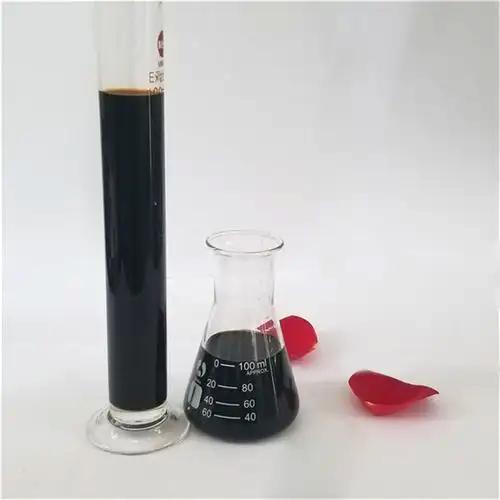
In addition, other sugars such as glucose, mannose, galactose and arabinose are also present in the hemicellulose hydrolysate [39]. Because of the small amount of mannose, galactose and arabinose in the hydrolysate, the bacteria are not very sensitive to them, so they have little effect on xylitol fermentation[42] . Although the presence of glucose can be preferentially used by the bacteria for their own growth and metabolism to avoid the useless consumption of xylose, the difference in the proportion of glucose in the hydrolysate will not only lead to a change in the oxidation-reduction potential, which will affect the activities and ratios of the enzymes related to xylose metabolism, but also produce metabolic deterrent effects that can seriously inhibit the pathway of xylitol fermentation[32] . In addition, glucose concentrations above a certain range can cause the bacteria to produce a certain volume of ethanol that is inhibitory to xylitol fermentation[37] . Therefore, it is necessary to optimize and obtain the appropriate sugar concentration for the growth and metabolism of the bacteria and xylitol fermentation.
In the early stage of fermentation, increasing sufficient dissolved oxygen in the medium can, on the one hand, lead to the rapid growth of the bacteria and reduce the production of by-products that are unfavorable to xylitol fermentation, such as ethanol; on the other hand, it can lead to the consumption of acetic acid, furfural and other inhibitors to shorten the stagnation period [43]. However, under sufficiently dissolved oxygen, the NADH produced by xylitol dehydrogenase is oxidized back to NAD+ by the respiratory chain, which leads to further oxidation and dehydrogenation of xylitol to form xylulose. Therefore, xylitol can only be accumulated in large quantities under strictly limited oxygen supply conditions, and the selection of different aeration and fermentation strategies has a great influence on the production of xylitol[44] . In order to solve the above problem, some researchers have investigated the fermentation of xylitol under different aeration rates and then selected a moderate aeration rate for constant aerobic fermentation, which is simple, but poorly regulated for xylitol fermentation and unfavorable to the accumulation of the product[41] .
Other researchers have adopted the strategy of high and then low aerobic fermentation: use high aerobic rate at the beginning of the fermentation to make the bacteria grow a lot, and then reduce the aerobic rate accordingly to ensure the accumulation of xylitol. Preziosi Blloy et al [45] achieved 80% xylose conversion in hemicellulose hydrolysate of Candia uilliermondii by using high and then low partial oxygenation. In addition, Wang et al [46] used a three-step oxygenation strategy in xylitol fermentation with hemicellulose hydrolysate as substrate, i.e., firstly, high aeration to make the bacteria multiply; after the bacteria reached a certain concentration, they maintained a medium aeration for a short time to make the bacteria adapt, and then they continued to lower the aeration to ensure the accumulation of xylitol, and the xylitol production was further improved by the application of this strategy.
4 Application of immobilization in the fermentation of xylitol production
Currently, the use of immobilization technology for the fermentation of xylitol is also a promising development direction. Compared with free fermentation, immobilized cellular fermentation has the advantages of reusability, shortening the fermentation production cycle, facilitating the separation, purification and post-processing of the product, high cell density, high stability and strong resistance to acid, alkali and temperature changes[47,48] . Therefore, it has important research value and economic value. The immobilization of cells can improve the stability of fermentation and significantly increase the fermentation efficiency, and realize continuous multi-batch fermentation, such as: Prakash et al [49] immobilized D. hansenii with calcium alginate at an initial xylose concentration of 100 g/L, and the conversion rate of xylitol reached 0.82 g/g and was maintained at 98% of the theoretical value for five consecutive batches of fermentation. The xylitol conversion was maintained at 98% of the theoretical value in five consecutive fermentation batches.
The key to cell immobilization technology lies in the performance of the immobilized carriers, and high quality carriers have the advantages of non-toxicity, good mass transfer, low price and long life[50] . In immobilized fermentation, different immobilization methods are required depending on the cell types and characteristics[51] . Composite carriers formed by combining inorganic and organic materials have become a hot research topic in recent years because of the advantages of both materials.
Deng Lihong et al. [52] found that the mass concentration of PVA greatly affected the phosphate resistance and mechanical strength of the cell particles, which was crucial for regulating the performance of the composite carrier when polyvinyl alcohol (PVA) and sodium alginate were used for the composite embedding of Pseudohyphae tropicalis cells. The four commonly used immobilization methods are adsorption, covalent method, cross-linking method and embedding method [53]. For example, Li et al.[18] used calcium alginate gel embedding method to immobilize the double coenzyme-dependent Pasteur Picchu yeast X-33 obtained by cloning, and the conversion rate of xylitol was 37.5% after xylose fermentation.Wang et al.[53] immobilized the tropical Pseudohyphomyces yeast by polyurethane, which was hydrolyzed in corn kernel without decoloration and ion-exchange. Wang et al. [53] used polyurethane to immobilize Pseudomonas tropicalis to directly convert xylose in corn kernel hydrolysate without decolorization and ion exchange, and the xylitol yield and production rate reached 71.2% and 2.10 g/(L-h), respectively, in 12 batches of 21 days of fermentation tests, which is an immobilization method with great potential for industrial development.
5 Summary
The production of xylitol by biofermentation has irreplaceable advantages and great potential for development. In this paper, we have summarized the three aspects of xylitol production strains, xylitol fermentation using hemicellulose hydrolysate as substrate, and the application of immobilization technology in xylitol. It also highlights the main research directions of xylitol production by bioprocessing, i.e., the use of genetic engineering technology, the construction of genetically engineered bacteria with high efficiency and high yield by means of genetic modification, the use of hemicellulosic hydrolysate as the substrate for xylitol fermentation, and the use of immobilization technology, which uses different fixation media and fixation methods to improve the efficiency of fermentation and the production rate. It is believed that with the gradual deepening of these research directions, the bioproduction process of xylitol will become more mature, laying a certain foundation for the industrialization of bioproduction of xylitol in the future.
Reference
[1] Fang XN, Study on the key technique of xylitol fermentation from corn cob Hemicellulosic Hydrolysate[D]. Hangzhou: Zhejiang University, 2011: 1―197.
[2] Fan J, Han Y, Zhou ZJ, et al. Research progress on production of sugar alcohols by microbial fermentation [J]. Food Ferment Technol, 2013, 49(5): 94―98.
[3] Silva SS, Roberto IC. Felipe MGA, et al. Batch fermentation of xylose for xylitol production in stirred tank bioreactor [J]. Process Biochem, 1996, 31(6): 549―553.
[4] Pérez-Bibbinsa B, Salgadoa JM, Torradoc A, et al. Culture parameters affecting xylitol production by debaryomyces hansenii immobilized in alginate beads [J]. Process Biochem, 2013, 48(3): 387―397.
[5] Huang CF, Jiang YF, Guo GL, et al. Development of a yeast strain for xylitol production without hydrolysate detoxification as part of the integration of co-product generation within the lignocellulosic ethanol process [J]. Bioresour Technol, 2011, 102(3): 3322―3329.
[6] Wang L, Wu DP, Tang PWH, et al. Effect of organic acids found in cottonseed hull hydrolysate on the xylitol fermentation by Candida tropicalis [J]. Bioprocess Biosyst Eng, 2013, 36(8): 1053―1061.
[7] Wang L, fan X G, Tang PWH, et al. Xylitol fermentation using hemicellulose hydrolysate prepared by acid pre-impregnated steam explosion of corncob [J]. J Chemtechnol Biotechnol, 2013, 88(11): 2067―2074.
[8] Winkelhausen E, Jovanovic-Malinovska R, Kuzmanova S, et al. Hydrogels based on u.v.-crosslinked poly(ethylene oxide)matrices for immobilization of Candida boidinii cells for xylitol production [J]. World J Microbiol Biotechnol, 2008, 24(10): 2035―2043.
[9] Zhao SJ, Hou K, Liang YL, et al. Screening of xylitol-producing strain and optimization of its fermentation conditions [J]. J Jilin Univ (Eng Technol Edit), 2010, 40(3): 868―872.
[10] Zhai YP, Sun JS, Li M, et al. Xylitol production of genetically engineered bacteria progress [J]. Food Science, 2011, 32(suppl): 15―19.
[11] Zhang JM, GengAL, Yao CY, et al. Xylitol production from D-xylose and horticultural waste hemicellulosic hydrolysate by a new isolate of Candida athensensis SB18 [J]. Bioresour Technol, 2012, 105(1): 134―141.
[12] Jiao JY, Wu MB, Zhao JF, et al. Study on genetic engineering to transform the strains of xylitol production [J]. Chin J Biotechnol, 2012, 32(11): 124―131.
[13] Carvalho W, Santos J C, CanilhaL, et al. Xylitol production from sugarcane bagasse hydrolysate metabolic behaviour of Candida guilliermondii cells entrapped in caalginate [J], Biochem Eng J, 2005, 25(1): 25―31.
[14] Wang QL. Cloning of Pichia guilliermondii xylose reductase gene and expression in the pichiapastoris GS115[D]. Changchun: Jilin Agricultural University, 2012: 1―45.
[15] Yang X Q. Construction of the high-yield xylitol engineering strain of Candida tropicalis[D]. Guilin: Guangxi Normal Univepsity, 2013, 1―64.
[16] Wang XX, Zheng CN, Wang FF, et al. Common expression of xynA and XR in the production of xylitol research [J]. J Food Ferment Ind, 2007, 33(4): 26―29.
[17] Ye K, Lu L, Liu M. Study on the co-expression of xyll, xyl2, and tall in the construction of recombinant Saccharomyces cerevisiae and xylose fermentation [J]. Liquor-making Technol, 2012, 222(12): 41―47.
[18] Li J, He X, Zhang F W, et al. Tropical candida XYL1 in Pichia pastoris expression and immobilized cell fermentation production of xylitol [J]. Chin J Biotechnol, 2009, 29(6): 58―62.
[19] Kim SR, Ha SJ, Kong II. High expression of XYL2 coding for xylitol dehydrogenase is necessary for efficient xylose fermentation by engineered Saccharomyces cerevisiae [J]. Metabolic Eng, 2012, 14(4): 336―343.
[20] Li M. Construction of the industrial saccharomyces cerevisiae strain expressing xylose reductase gene efficiently and primary study on its xylitol fermentation[D]. Jinan: Shandong University, 2006: 1―52.
[21] Zheng SH. Studies on Xylitol Production by Microbial Fermentation of Hemicellulosic Hydrolysate from Tea Seed Shells[D]. Hefei: Anhui Agricultural University, 2011, 1―50.
[22] Ping Y, Zhi H, Song LG, et al. Xylitol production from non-detoxified corncob hemicellulose acid hydrolysate by Candida tropicalis [J]. Biochem Eng J, 2013, 75: 86―91.
[23] Soleimani M, Tabil L. Evaluation of biocomposite-based supports for immobilized-cell xylitol production compared with a free-cell system [J]. Biochem Eng J, 2014, 82: 166―173.
[24] Cunha MAA, Converti A, Santos JC. PVA-Hydrogel entrapped Candida Guilliermondii for xylitol production from sugarcane hemicellulose hydrolysate [J]. Appl Biochem Biotechnol, 2009, 157(3): 527―537.
[25] Wang XL. Research on the xylitol fermentation from corncob hemicellulosic hydrolysate[D]. Beijing: Beijing University of Chemical, 2013: 1―83.
[26] Wang L, Yang M, Fan XG, et al. An environmentally friendly and efficient method for xylitol bioconversion with high-temperature -stea- ming corncob hydrolysate by adapted Candida tropicalis[J]. Process Biochem, 2011, 46(8): 1619―1626.
[27] Zhang JM, Geng AL, Yao CY, et al. Xylitol production from D-xylose andhorticultural waste hemicellulosic hydrolysate by a new isolate of Candida athensensis SB18 [J]. Bioresour Technol, 2012, 105: 134―141.
[28] Damaso MCT, Castro AM, Castro RM, et al. Application of xylanase from Thermomyces lanuginosus IOC-4145 for enzymatic hydrolysis of corncob and sugarcane nagasse [J]. Appl Biochem Biotechnol, 2004, 113-116: 1003―1012.
[29] ElSalhy M, Zahid IS, Honkala E. Effects of xylitol mouthrinse on Streptococcus mutans [J]. J Dent, 2012, 40(12): 1151―1154.
[30] Su BL, Wu MB, Lin JP. Metabolic engineering strategies for improving xylitol production from hemicellulosic sugars [J]. Biotechnol Lett, 2013, 35(11): 1781―1789.
[31] Walther PT. Agblevor HFA. The influence of aeration and hemicellulosic sugars on xylitol production by candida tropicalis [J]. Bioresour Technol, 2001, 76(3): 213―220.
[32] Ernesto A, Silva J B, Silva A, et al. The influence of pH and dilution rate on continuous production of xylitol from sugarcane bagasse hemicellulosic hydrolysate by C.Guilliermondii [J]. Process Biochem, 2003, 38(12): 1677―1683.
[33] Jia SL, Hou HP. Advance in the research on and the application of the continuous fermentation with immobilized technology [J]. Brewing technol, 2012, 212(2): 87―90.
[34] peñuela vásquez M, Souza MB, Pereira N, et al. RSM analysis of the effects of the oxygen transfer coefficient and inoculum size on the xylitol production by Candida guilliermondii [J]. Appl Biochem Biotechnol, 2006, 129/132(0): 256―264.
[35] Sene L, Itolo MV, Felipe MGA, et al. Effects of environmental conditions on xylose reductase and xylitol dehydrogenase production by candida guilliermondii [J]. Process Biochem, 2000, 84/86(0): 371―380.
[36] Miura M, Watanabe I, Shimotori Y, et al. Microbial conversion of bamboo hemicellulose hydrolysate to xylitol[J]. Wood Sci Technol, 2013, 47(3): 515―522.
[37] Martinez M L, Sanchez S, Bravo V. Production of xylitol and ethanol by Hansenula polymorpha from hydrolysates of sunflower stalks with phosphoric acid [J]. IndCrops Prod, 2012, 40: 160―166.
[38] Zou KY, Chen XQ, et al. Favorable effect of very low initial kla value on xylitol production from xylose by a self-isolated strain of Pichia guilliermondii [J]. J Biosci Bioeng, 2010, 109(2): 149―152.
[39] Signori L, Passolunghi S, Ruohonen L. Effect of oxygenation and temperature on glucose-xylose fermentation in Kluyveromyces marxianus CBS712 strain microbial cell factories [J]. Microb Cell Fact, 2014, 13(51): 1―13.
[40] Ramesh S, Muthuvelayudham R, Rajesh Kannan R, et al. Enhanced production of xylitol from corncob by pachysolen tannophilus using response surface methodology [J]. Int J Food Sci, 2013: 1―9.
[41] Oh EJ, Ha SJ, KimS R, et al. Enhanced xylitol production through simultaneous co-utilization of cellobiose and xylose by engineered Saccharomyces cerevisiae [J]. Metab Eng, 2013, 15: 226―234.
[42] Pérez-Bibbins B, Oliveira RPS, Torrado A. Study of the potential of the air lift bioreactor for xylitol production in fed-batch cultures by Debaryomyces hansenii immobilized in alginate beads [J]. Appl Microbiol Biotechnol, 2014, 98(1): 151―161.
[43] Cheng KK, Zhang JA, Ling HZ. Optimization of pH and acetic acid concentration for bioconversion of hemicellulose from corncobs to xylitol by candida tropicalis [J]. Biochem Eng J, 2009, 43(2): 203―207.
[44] Santos DT, Sarrouh BF, Rivaldi JD, Use of sugarcane bagasse as biomaterial for cell immobilization for xylitol production [J]. J Food Eng, 2008, 86(4): 542―548.[45] Preziosi Belloy L, Nolleau V, Navarro JM. Xylitol production from aspenwood hemicellulose hydrolysate by Candida guilliermondii [J]. Biotechnol Lett, 2000, 22: 239―243.
[46] Wang L, Tang PWH, Fan XG, et al. Effect of selected aldehydes found in the corncob hemicellulose hydrolysate on the growth and xylitol fermentation of Candida tropicalis [J]. Biotechnol Prog, 2013, 29(5): 1181―1189.
[47] Xi Y, Jiao H, Liu XY. Cell immobilization technique and its application development [J]. Chem Life, 2013, 33(5): 576―580.
[48] Wang L, Yuan QP, Chang Z. Polyurethane foam immobilization of Candida tropicalis for xylitol production [J]. J Microbiol, 2009, 36(7): 943―948.
[49] Prakash G, Varma AJ, Prabhune A, et al. Microbial production of xylitol from D-xylose and sugarcane bagasse hemicellulose using newly isolated thermotolerant yeast Debaryomyces hansenii [J]. Bioresour Technol, 2011, 102(3): 3304―3308.
[50] West TP. Xylitol production by Candida species grown on a grass hydrolysate [J]. World J Microbiol Biotechnol, 2009, 25(5): 913―916.
[51] Sarrouh B, Silva SS. Repeated batch cell-immobilized system for the biotechnological production of xylitol as a renewable green sweetener [J]. Appl Biochem Biotechnol, 2013, 169(7): 2101―2110.
[52] Deng LH, Jiang JX, Yao SY. Effect of PVA concentration on mechanical strength, morphology and xylitol production of immobilized Candida tropicalis [J]. Food Sci, 2011, 32(23): 210―214.
[53] Wang L, Wu DP, Tang PWH, et al. Xylitol production from corncob hydrolysate using polyurethane foam with immobilized Candida tropicalis [J]. Carbohydr polym, 2012, 90(2): 1106―1113.


 English
English French
French Spanish
Spanish Russian
Russian Korean
Korean Japanese
Japanese